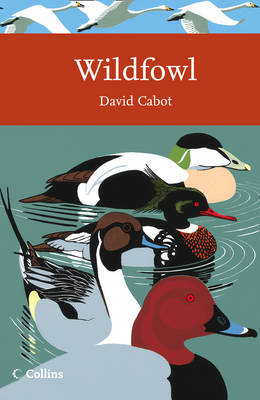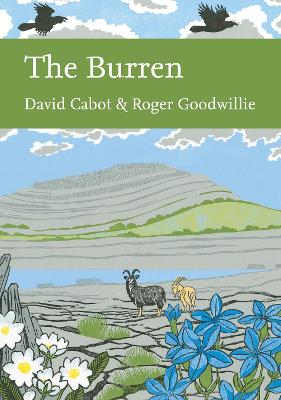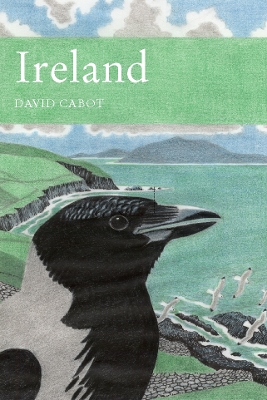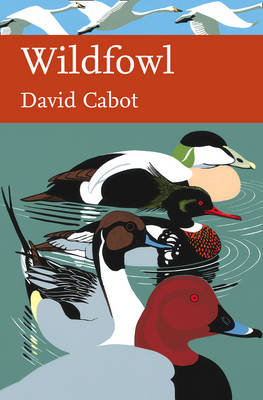Collins New Naturalist
3 primary works • 6 total works
Book 110
He also explores the evolution and history of wildfowl and our long relationship with them, through popular mythology and legends, which continue to fascinate us with a sense of mystery and awe.
Book 123
This New Naturalist volume provides a much-anticipated overview of these fascinating birds – the first book on the natural history of British and Irish terns since 1934.
Terns are small seabirds that are commonly seen along coastlines and estuaries in the summer months – their graceful flight and command of the air are among their most attractive features.
Most of the five species of terns breeding in Britain and Ireland today are under intensive management, involving protection from predators, human interference, egg-collecting, recreational activities, land-use changes, and a range of issues concerning climate change, including rising sea levels and flooding of low-lying colonies. If these protective measures were abandoned then the numbers of terns would inevitably decline, with the possibility of several species ending up on the endangered list. Covering the history of terns in Britain and Ireland, David Cabot and Ian Nisbet explore these diverse issues as well as offering a comprehensive natural history of these stunning seabirds.
Drawing on a wealth of new information and research, the authors focus on migrations, food and feeding ecology as well as breeding biology and behaviour. Perhaps most importantly, they highlight recent conservation issues and prospects, and what this means for the future of terns.
Book 138
The Burren is one of those rare and magical places where geology, glacial history, botany, zoology and millennia of cultural history have converged to create a unique landscape of extraordinary natural history interest. It is without equal to any other area in Ireland or Britain.
To the unsuspecting tourist, much of the landscape of the Burren looks bleak, rocky, and inhospitable for any sort of farming. Yet the Burren is an agricultural landscape that has been continuously farmed since the first settlers began clearing the forest cover in the Neolithic period. Today there are several hundred farms within the Burren area. Most of these families live and work there and the farmers are crucial for the Burren’s future as an area of unique landscape and ecological interest.
The area attracts any naturalist with an eye for beauty, but it is the intricacies of the species’ ecology, their links to the soil or to a particular insect that is really fascinating. It is a veritable paradise for naturalists – not only do plants seem to grow on next to nothing, but all the organisms have survived the comings and goings of woodland, the multiple mouths of grazing animals and the passage of several civilisations over 6,000 years. How they have persisted in such exuberance and diversity is a testament to their past evolution and to the gene complement that they have accumulated over several million years previously, allowing them to adapt to a multitude of different conditions.
In this timely addition to the New Naturalist Library, the authors examine the ecology of the Burren, delving into the history of its exploration. One of the overriding concerns is the impact of tourism, which has been accelerated and stimulated by the promotion of the Wild Atlantic Way in recent years. Its impact is currently being addressed by the Geopark LIFE project, along with other tourism-related issues. Any future expansion of the Burren National Park, coupled with more vigilant, but judicious, land management, would have potential to enhance the protection of biodiversity. As ‘the jewel in the ecological crown of Ireland’, the area must be imaginatively protected and managed for our present and future generations.
Another volume in the popular New Naturalist series, this book will cover all aspects of the natural history of Ireland, from biological history, geology and climate, through to nature conservation.
David Cabot, an expert in his field, provides a comprehensive view of all the different types of habitats to be found in Ireland, from the peatlands and fens, to the mountains and uplands; from broad-leaved woodland to coastal zones. The book examines the history and ecology of each of these habitats, and describes the rich variety of flora and fauna to be found living there.
In The Natural History of Ireland David Cabot also discusses the issue of nature conservation, addressing the history of the conservation movement in Ireland – its successes and failures – and the needs for the future.
A fascinating and highly detailed study, this book will complement other published works on the natural history of England, Wales and Scotland.
He also explores the evolution and history of wildfowl and our long relationship with them, through popular mythology and legends, which continue to fascinate us with a sense of mystery and awe.





